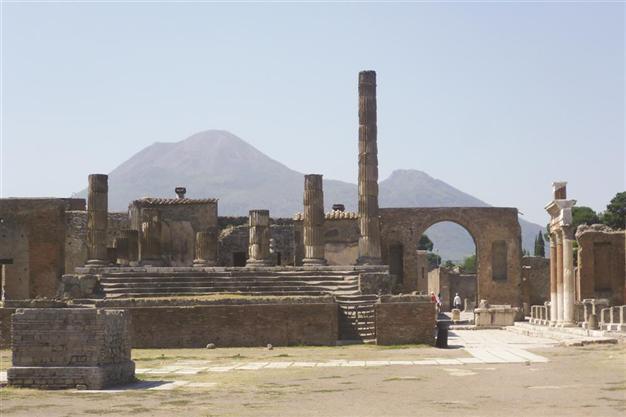UNESCO warns Italy over ancient city of Pompeii
ISTANBUL

UNESCO representers warns Italy for Pompeii ancient city not to be damaged.
UNESCO has warned Italy that Pompeii will be placed on its “World Heritage in Danger” list unless urgent steps are taken to preserve the site, according to the Art Newspaper.The move follows a damning report by a group of UNESCO-appointed international experts, which states that if current initiatives “fail to deliver substantial progress in the next two years, then an ‘In-Danger’ listing would be inevitable.” Other specialists argue, however, that the report is overly critical. The report provides detailed evidence of continuing damage to the ancient Roman city and to its frescoes and mosaics. The archaeological site attracted around 2.3 million visitors in 2012.
The mission, which took place in January, was organized by UNESCO and the International Council on Monuments and Sites (Icomos). It comprised Christopher Young (English Heritage), Jean-Pierre Adam (École du Louvre) and Alix Barbet (Centre national de la recherche-scientifique, Paris). The report, which was presented in June at the meeting of the World Heritage Committee in Phnom Penh, also covers the neighboring cities of Herculaneum and Torre Annunziata, which are part of the World Heritage Site.
The experts warn that, without considerable progress in the next two years, the conservation backlog in Pompeii could become “disastrous.” Further buildings have collapsed during the past few years, notably the Schola Armaturarum in 2010.
Conservation of the remains has not yet begun, so “further decay must have occurred,” the report says. It notes partial collapses at the Casa di Siricus and the Casa delle Nozze d’Argento, and a fallen pillar at the Casa di Octavius Quartio. The report provides details on the most important 13 houses, which are at “a high degree of risk.”
There is particular concern about the “gradual deterioration” of wall paintings and mosaic floors. Rising dampness could lead to vegetation growth and the swelling of the ground, which causes small gaps between the tesserae (mosaic fragments). The problem worsens quickly and is difficult to tackle if prompt action is not taken, according to officials.
















